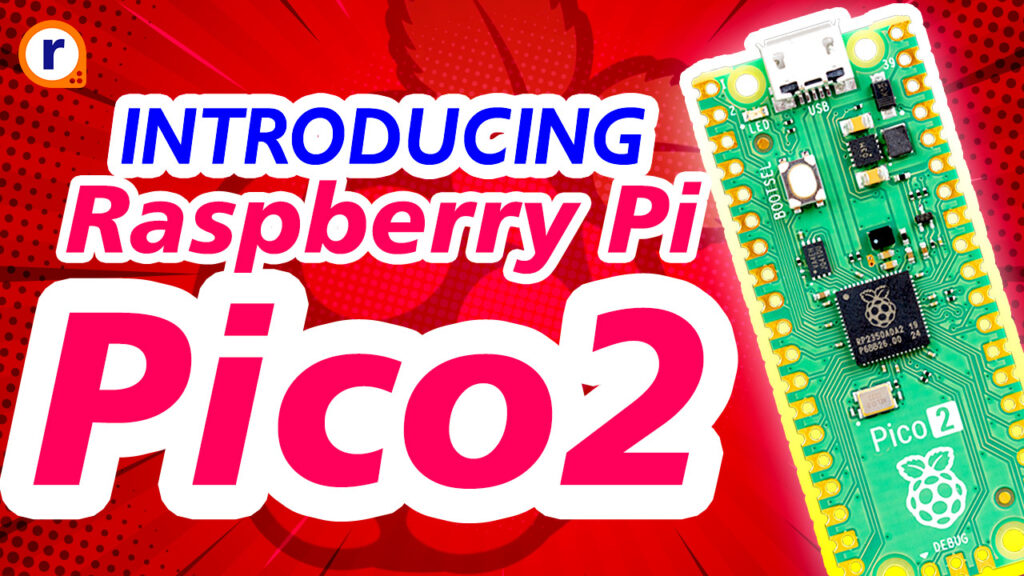Raspberry Pi Pico 2 – What’s New and exciting about it ?
Hello, today we’ll be looking at this new Raspberry Pi Pico 2 which came out today, 8th August 2024. And it is a substantial improvement over its previous generation which

Hello, today we'll be looking at this new Raspberry Pi Pico 2 which came out today, 8th August 2024. And it is a substantial improvement over its previous generation which is Raspberry Pi Pico.
So without any further delay, let see what's new and exciting about it.
Overview of Raspberry Pi Pico 2
Raspberry Pi Pico 2 is the new affordable microcontroller board just at Rs. 549, which is built on RP2350.
Its the new high performance, secure microcontroller. With a higher core clock speed, double the on-chip SRAM, double the on-board flash memory compared to its predecessor Pico.
And comes with more powerful Arm cores with optional RISC-V cores, new security features, and upgraded interfacing capabilities, Raspberry Pi Pico 2 delivers a significant performance and feature boost, while also retaining hardware and software compatibility to the earlier members of the Raspberry Pi Pico series such as Pico and Pico W, etc.
What's new ?
The main processor in this; which is RP2350, is a much improved chip and is built around Arm TrustZone for Cortex-M, which incorporates signed boot. Ensuring security with features such as secure boot ROM, which well documents and visible to all users without any restrictions.
Which is transparent approach which contrasts with the “security through obscurity” offered by legacy vendors, allows professional users to integrate RP2350, and Raspberry Pi Pico 2, into products with confidence.
Not to mention the 8KB of antifuse OTP for key storage, SHA256 acceleration, a hardware TRNG and fast glitch detectors.
Key Features and Specifications
Processor and Performance
- Dual Arm Cortex-M33 or dual RISC-V Hazard3 processors @ 150MHz
- 520 KB on-chip SRAM and 4 MB on-board QSPI flash
Connectivity
- 1 x onboard USB connector (Future versions may have wifi like Pico W)
Power and Efficiency
- 1.8–5.5V DC
I/O and Peripheral Support
- 2 × UART
- 2 × SPI controller
- 2 × I2C controllers
- 24 × PWM channels
- 12 × PIO state machines
- 26 x multipurpose GPIO in total and 4 of which can be used as ADC
Getting Started with Raspberry Pi Pico 2
Raspberry Pi Pico 2 almost should be drop-in replacement for the most part, unless you want it to be that way. Otherwise the features it brings, is pretty useful and very easy to program it. The programming method hasn't changed.
Get your Raspberry Pi Pico 2 through here. Before programming for it 👍
It can be programmed using c/c++ or micropython. Preferably using thonny as its very handy to work with.
Lets start with simple, good old blink example. Copy and paste the code into your IDE and save the file as main.py on Pico 2.
And whenever you turn your Pi Pico 2 on, it'll automatically run this main.py file without any users intervention.
from machine import Pin
import time
# Define the LED pin
led = Pin(25, Pin.OUT) # On the Raspberry Pi Pico, the built-in LED is on pin 25
while True:
led.toggle() # Toggle the LED state
time.sleep(1) # Sleep the Pico 2 for 1 SecondCommunity and Resources
Regarding the community support, there's a huge community behind Raspberry Pi Pico due to its massive success. So in due time, community will be automatically form around Raspberry Pi Pico 2.
Providing new libraries and packages to make use of all the new features in various ways which could seem impossible at first. But with community support anything can be achieved within a certain limit of course.
Use Cases and Applications
There are numerous new and old uses cases and application where we could use this new Raspberry Pi Pico 2. Few of the examples are -
- DIY Projects - Community Projects, Tutorials, Niche Projects to solve problem
- Educational Purpose - Teaching purpose, demonstration, electronics
- IoT Applications - Smart home integrations, automation, monitoring, and more.
Conclusion and Final Thoughts
Is It Worth the Upgrade?
For existing Raspberry Pi Pico users, the decision to upgrade will largely depend on the specific needs of your projects. The new features may offer tangible benefits for those requiring more processing power or connectivity.
For new users, the Pico 2 is undoubtedly a solid choice, providing a comprehensive package that aligns well with the growing demands of modern technology.
Final thoughts on Pico 2
In conclusion, the Raspberry Pi Pico 2 represents a significant step forward in the world of microcontrollers. Its blend of performance, affordability, and community support makes it an enticing option for anyone interested in technology.
I encourage you to explore its capabilities, experiment with projects, and engage with the vibrant community that surrounds it.
Feel free to share your thoughts and experiences with the Raspberry Pi Pico 2 in the comments section below. Whether you're a seasoned developer or a curious newcomer, the journey with the Pico 2 is sure to be an exciting one.
Happy tinkering!






